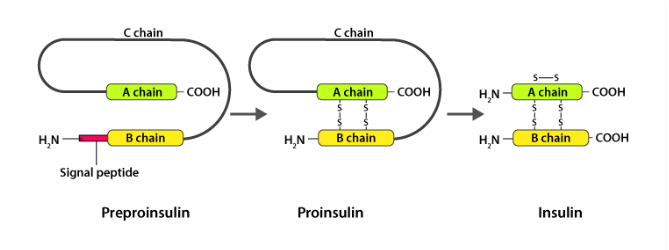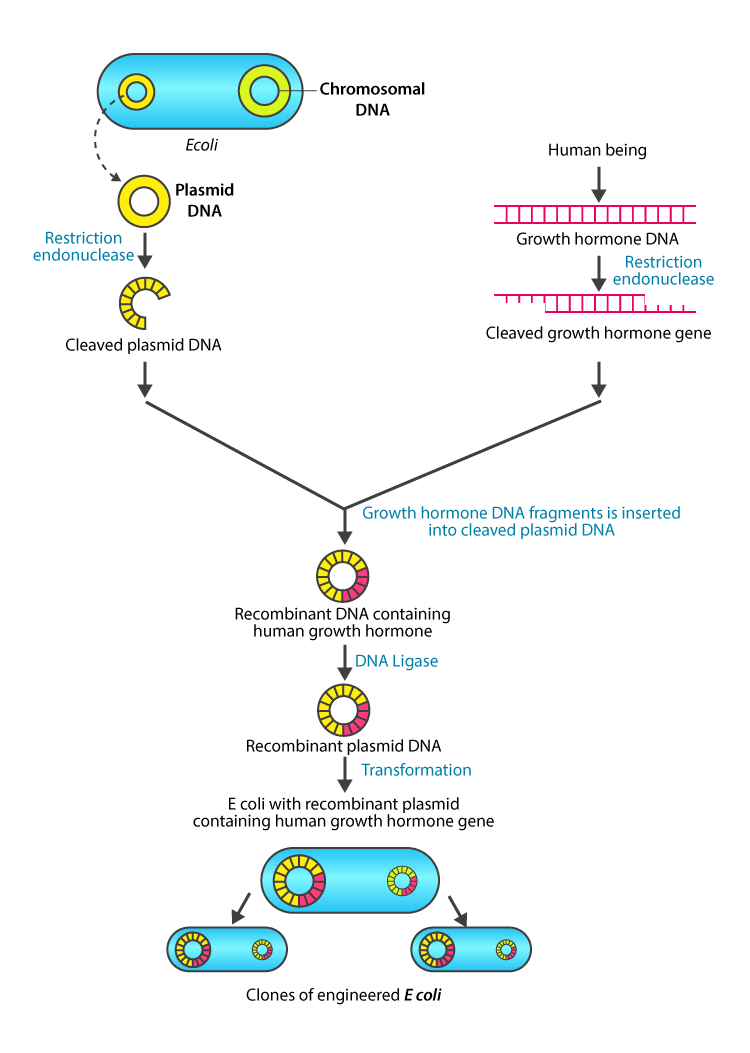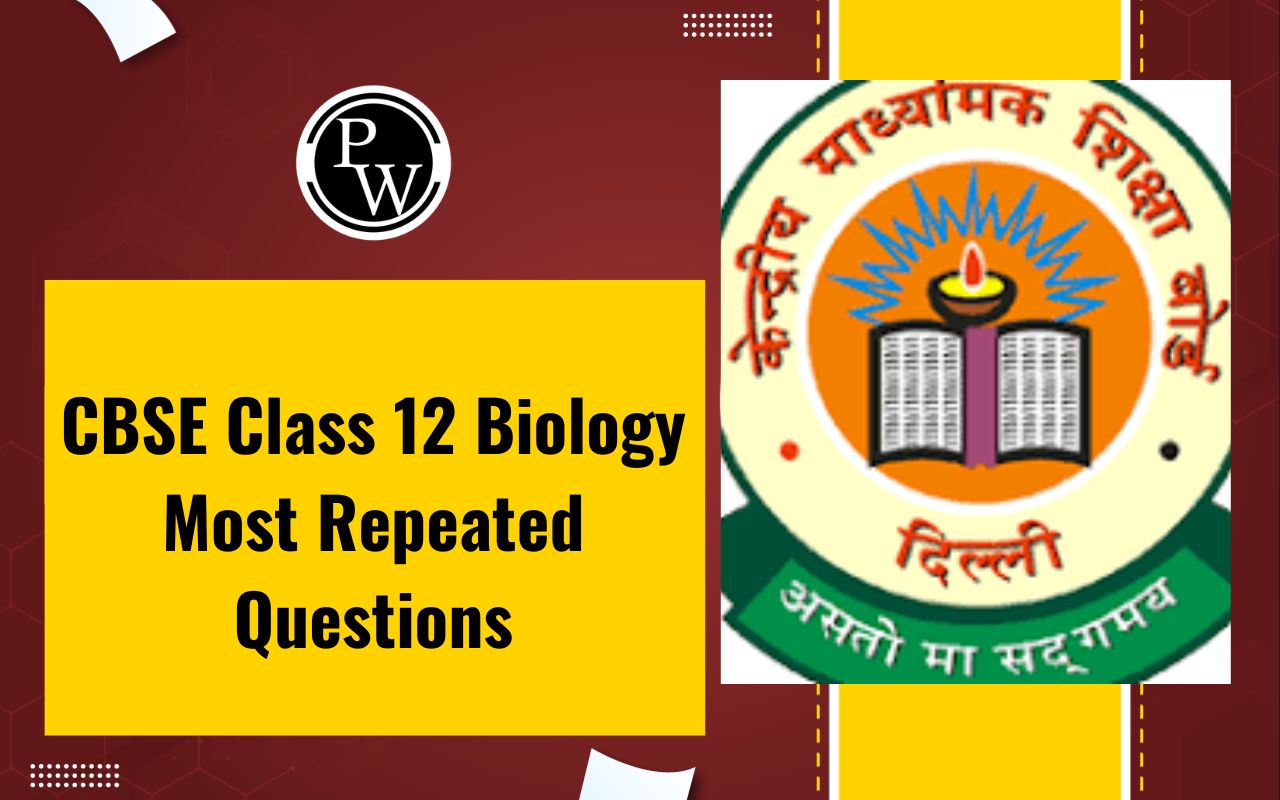
NCERT Solutions for Class 12 Biology Chapter 10: NCERT Solutions for Class 12 Biology Chapter 10 Biotechnology and Its Applications are highly beneficial for students as they provide clear and concise explanations of complex biotechnological concepts. These solutions help students understand the applications of biotechnology in medicine, agriculture, and environmental protection.
By solving the exercises, students can reinforce their knowledge of topics such as recombinant DNA technology, gene therapy, and genetically modified organisms (GMOs). These solutions also provide step-by-step guidance for solving questions making it easier for students to grasp key concepts and improve their problem-solving skills.NCERT Solutions for Class 12 Biology Chapter 10 Overview
NCERT Solutions for Class 12 Biology Chapter 10: Biotechnology and Its Applications provides a comprehensive understanding of biotechnology and its diverse applications in various fields such as medicine, agriculture, and the environment. The chapter introduces biotechnology as the use of living organisms or their components to develop or create useful products, processes, or services.Key topics covered in this chapter include:
Recombinant DNA Technology : The process of cutting, modifying, and recombining DNA to create genetically modified organisms (GMOs) or recombinant organisms that can produce desired proteins or traits.
Applications of Biotechnology :
- In Medicine : Biotechnology has led to the development of gene therapy, the production of recombinant drugs such as insulin, vaccines, and hormones like growth hormone.
- In Agriculture : Genetically modified (GM) crops have been developed to enhance yield, nutritional value, and resistance to pests and diseases.
- In Environmental Biotechnology : Biotechnology is used in bioremediation, which involves using microorganisms to clean up pollutants from the environment, and in waste management.
Biotechnology in Industry : The use of microorganisms in industrial processes such as fermentation to produce products like alcohol, antibiotics, and enzymes.
NCERT Solutions for Class 12 Biology Chapter 10 PDF
The NCERT Solutions for Class 12 Biology Chapter 10 Biotechnology and Its Applications PDF provides easy-to-understand solutions for all the questions in the chapter. The PDF helps students clarify difficult concepts and prepares them for exams by providing clear and simple explanations. You can download the PDF from the link below:Download NCERT Solutions for Class 12 Biology Chapter 10 PDF
NCERT Solutions for Class 12 Biology Chapter 10 Biotechnology and Its Application
Below is the NCERT Solutions for Chapter 10 Biotechnology and Its Application-1. Crystals of Bt toxin produced by some bacteria do not kill the bacteria themselves because –
(a) bacteria are resistant to the toxin.
(b) the toxin is immature.
(c) the toxin is inactive.
(d) bacteria enclose toxins in a special sac.
Solution:
(c) the toxin is inactive.2. What are transgenic bacteria? Illustrate using any one example.
Solution:
Transgenic bacteria are bacteria that have had foreign genes inserted into their DNA. An example is E. coli, which has been modified to produce human insulin. The gene for insulin is inserted into E. coli, allowing the bacteria to produce the insulin protein, which is later extracted and used for medical purposes.
3. Compare and contrast the advantages and disadvantages of the production of genetically modified crops.
Solution:
Advantages:
- GM crops can be made resistant to pests, reducing the need for chemical pesticides.
- They can tolerate harsh conditions like drought and salinity.
- GM crops can be designed to have enhanced nutritional value, like golden rice, which is rich in Vitamin A.
- Increased productivity can help prevent soil depletion.
Disadvantages:
- There is a risk of unintended consequences, such as the creation of superweeds.
- GM crops may pose health risks, including allergenicity and antibiotic resistance.
- They can negatively impact biodiversity and disrupt ecosystems.
4. What are Cry proteins? Name an organism that produces it. How has man exploited this protein to his benefit?
Solution:
Cry proteins are toxic proteins produced by the bacterium Bacillus thuringiensis. These proteins, when ingested by insects, break down their gut cells, ultimately killing them. Humans have exploited Cry proteins by using them in genetically modified crops like Bt cotton and Bt corn, which are resistant to pests without the need for chemical pesticides.5. What is gene therapy? Illustrate using the example of adenosine deaminase (ADA) deficiency.
Solution:
Gene therapy involves inserting, altering, or repairing genes within an individual's cells to treat or prevent diseases. For example, in ADA deficiency, a gene responsible for the enzyme adenosine deaminase is missing or defective. Gene therapy can introduce a functional copy of the ADA gene into the patient’s cells, allowing them to produce the enzyme and restore immune function.6. Diagrammatically represent the experimental steps in cloning and expressing a human gene (say, the gene for growth hormone) into a bacterium like E. coli.
Solution:
DNA cloning involves inserting a gene (like the growth hormone gene) into a plasmid vector, which is then introduced into a bacterium like E. coli. The bacterium then expresses the gene, producing the desired protein, which can be harvested and used.
7. Can you suggest a method to remove oil (hydrocarbon) from seeds based on your understanding of rDNA technology and the chemistry of oil?
Solution:
Recombinant DNA technology or rDNA is a technique which is used for the manipulation of the genetic material of an entity in order to obtain desired results. For this, the genes that are necessary for oil formation in seeds must be recognized. With the help of restriction endonucleases, appropriate genes should be removed. The DNA thus obtained must be treated with DNA ligases to seal the broken ends of the DNA. When cultivated aseptically on a nutrient medium, these cells will differentiate into a new plant possessing seeds with no oil.8. Find out on the internet what is golden rice.
Solution:
Golden rice is a genetically modified variety of rice (Oryza sativa) developed to combat Vitamin A deficiency, which is prevalent in many developing countries. This rice has been engineered to produce beta-carotene , a precursor to Vitamin A, in its endosperm (the edible part of the rice). Normally, rice plants produce beta-carotene in their leaves, but it is not present in the seeds because the pigment is involved in photosynthesis, which does not occur in the rice grain. By inserting genes that produce beta-carotene into the rice genome, scientists have created golden rice, which provides an affordable and sustainable solution to Vitamin A deficiency, particularly in regions where people rely heavily on rice as a staple food. Despite its potential health benefits, golden rice has faced opposition from environmental and anti-GMO groups, and it is not yet widely available for human consumption.9. Does our blood have proteases and nucleases?
Solution:
While it is not entirely accurate to say that blood does not contain proteases and nucleases, the enzymes that are present are typically in inactive forms or tightly regulated. Proteases and nucleases in their active forms would indeed cause damage to proteins and nucleic acids in blood and cells. For example, proteases like plasmin and trypsinogen are found in the blood but are in inactive forms to prevent the breakdown of healthy proteins. Similarly, nucleases are present but are controlled to avoid unwanted DNA or RNA degradation. Inactive forms of these enzymes are crucial to prevent them from causing harm to the body's own cells and tissues.10. Consult the internet and find out how to make orally active protein pharmaceuticals. What is the major problem to be encountered?
Solution:
Orally active protein pharmaceuticals, such as vaccines or therapeutic proteins, are designed to be ingested and absorbed into the bloodstream through the digestive system. However, a significant challenge is the degradation of these proteins by the proteases in the stomach and intestines, which break down proteins before they can have their intended effect. Key Steps in Making Orally Active Protein Pharmaceuticals:Gene Isolation and Cultivation:
- The genes encoding the antigen or therapeutic protein are often isolated from bacteria or other sources and inserted into plants (e.g., transgenic potatoes). The plants then produce the desired proteins.
Encapsulation of Proteins:
- To protect proteins from degradation in the digestive system, they are encapsulated in protective formulations like tablets or liposomes. These carriers shield the protein from the acidic environment of the stomach and the digestive enzymes (proteases).
Targeting the Intestines:
- The protective coating on the tablet or capsule is designed to withstand stomach acid and only dissolve in the intestines, where the proteins can be absorbed by the villi (tiny projections in the intestinal lining). This ensures the proteins reach the bloodstream without being degraded.
Major Problems Encountered:
- Degradation by Digestive Enzymes: The main problem in the oral administration of protein pharmaceuticals is the risk of proteases in the stomach and intestines breaking down the proteins before they can be absorbed. This is why the proteins need to be carefully protected using coatings or formulations that resist stomach acid but dissolve in the intestines.
Benefits of Solving NCERT Solutions for Class 12 Biology Chapter 10
- Clear Understanding of Concepts : This chapter covers essential topics like genetic modification, biotechnology, and its applications. Solving the NCERT solutions helps students understand complex concepts in a simplified manner.
- Improved Exam Preparation : Regular practice of the exercises and solutions helps students become familiar with the types of questions asked in the exam, boosting their confidence and exam readiness.
- Application-Based Learning : The chapter emphasizes real-world applications like genetic engineering, genetically modified crops, and gene therapy. Solving the questions helps students relate theoretical knowledge to practical applications.
- Strengthens Problem-Solving Skills : By working through the solutions, students learn to approach problems systematically and develop critical thinking skills.
- Foundation for Higher Studies : Biotechnology is a fundamental topic in various fields like genetics, microbiology, and medicine. Mastering this chapter lays a strong foundation for students pursuing further studies in biology or related fields.
- Clarifies Doubts : The solutions provide clear, step-by-step explanations that help resolve doubts, enabling students to build a solid conceptual foundation.
- Better Time Management : Solving these problems helps students practice time management skills, as they learn how to solve questions efficiently within the exam time limit.
NCERT Solutions for Class 12 Biology Chapter 10 FAQs
What is biotechnology?
What are genetically modified organisms (GMOs)?
What is recombinant DNA technology?
How is gene therapy used in biotechnology?










